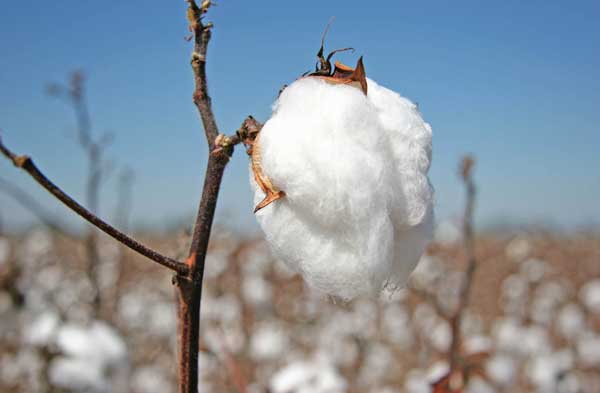
USDA’s March 30 Prospective Plantings report estimates U.S. cotton planted area for 2012 at 13.15 million acres, 11 percent below last year.Corn growers intend to plant 95.9 million acres of corn for all purposes in 2012, up 4 percent from last year and 9 percent higher than in 2010.Soybean planted area for 2012 is estimated at 73.9 million acres, down 1 percent from last year and down 5 percent from 2010.

USDA is projecting U.S. cotton planted area for 2012 at 13.15 million acres, 11 percent below last year. But the estimate of intended cotton acres, from USDA’s March 30 Prospective Plantings report, may already be starting to fall as cotton producers shift some intended acres to corn, according to analysts.
“Since the surveys were taken, a lot of farmers in the Delta have been talking about shifting to corn,” said cotton analyst Mike Stevens, speaking at the Ag Market Network’s March 30 conference call. “The average guess for cotton acres was coming in at around 12.7 million to 12.8 million acres.”
Cotton acreage is expected to total 12.9 million acres, down 11 percent from 2011. American Pima acreage is expected to total 270,000 acres, down 12 percent from 2011.
Upland cotton acres are projected lower for every cotton-producing state except Missouri, which is unchanged from last year, and South Carolina, where acreage are expected to increase by 12 percent.
Corn
Corn growers intend to plant 95.9 million acres of corn for all purposes in 2012, up 4 percent from last year and 9 percent higher than in 2010. If realized, this will represent the highest planted acreage in the United States since 1937 when an estimated 97.2 million acres were planted.
Soybeans
Soybean planted area for 2012 is estimated at 73.9 million acres, down 1 percent from last year and down 5 percent from 2010. Compared with 2011, planted area is down or unchanged across the Corn Belt and Great Plains with the exceptions of Illinois, North Dakota, South Dakota, and Wisconsin.
Rice
Area planted to rice in 2012 is expected to total 2.56 million acres, down 5 percent from 2011 and the lowest planted acreage since 1987.
Higher prices for competing commodities and poor export demand contributed to the expected decline in rice acres compared with last year, according to USDA. While long and short grain acres are expected to be up slightly, medium grain acres are down 24 percent from last year.
Area planted to rice in Arkansas, the largest rice-producing state, is at the lowest level since 1989. In California, where water supply remains questionable, growers intend to plant 7 percent fewer acres to rice than in 2011. If realized, area planted to rice in Mississippi will be the lowest since 1977.
Wheat
Wheat planted area is estimated at 55.9 million acres, up 3 percent from 2011. Winter wheat planted area, at 41.7 million acres, is up 3 percent from last year but down 1 percent from the previous estimate.
Of this total, about 29.9 million acres are hard red winter, 8.4 million acres are soft red winter, and 3.5 million acres are white winter. Area planted to other spring wheat for 2012 is estimated at 12 million acres, down 3 percent from 2011. Of this total, about 11.3 million acres are hard red spring wheat. Durum planted area for 2012 is estimated at 2.22 million acres, up 62 percent from the previous year.
About the Author(s)
You May Also Like





